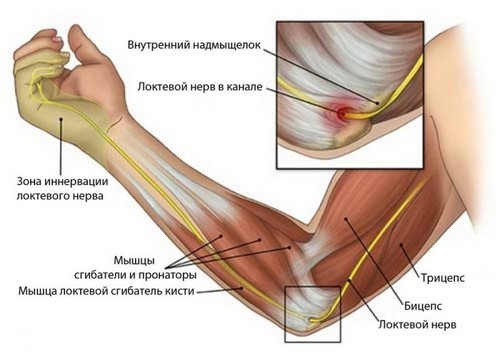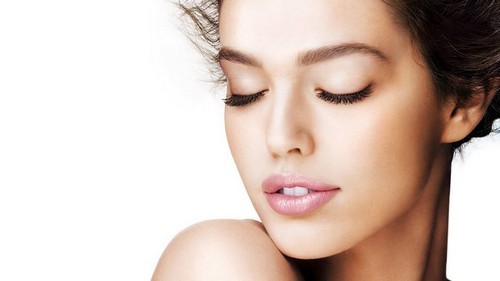One of the most unpleasant diseases to humans, especially in the summer is hyperhidrosis. The disease is characterized by the fact that the patient appears very heavy sweating (above the physiological range) at high temperatures or at small excitement.
People suffering from excessive sweating, often experience difficulties in social and personal life. By itself, severe sweating is not dangerous for human health, but at the same time significantly reduces the quality of life of the patient.
In the human body contains approximately four million sweat glands located throughout the body and their main function is the regulation of the temperature of the human body. People suffering from excessive sweating, is not observed any anomalies in structure and development of the sweat glands, they observed only the hyperfunction of these organs.
Most often excessive sweating manifests itself in the armpits, hands (palms), feet (foot), and in some cases there is profuse sweating, even in the face and chest. Sometimes severe sweating appears all over the body, then it is called General hyperhidrosis, and most often it is caused by some other diseases.
Symptoms of excessive sweating.
- Excessive sweating in the underarms, palms, feet, back, chest;
- Severe sweating with any physical exertion or stress;
- The sweating sickness;
- The unpleasant smell of sweat (bromides).

Causes of heavy sweating.
Depending on the type of disease (primary or secondary hyperhidrosis), differ the causes of excessive sweating.
Secondary hyperhidrosis (increased sweating, caused by another disorder):
- Hormonal disruption (pregnancy, puberty, andropause, menopause, pheochromocytoma, diabetes mellitus);
- Some medications;
- Infection;
- Neurological disease.
Primary hyperhidrosis (sweating is not caused by any other illness):
Although doctors do not know exactly why there is primary hyperhidrosis, but they have successfully determined that excessive sweating is caused by high activity of the sympathetic nervous system.
Funds from hyperhidrosis, or how to get rid of heavy sweating.
The main thing to consider is that if the disease is caused by any other disorders in the body, then you first need to cure those same diseases.
Antiperspirants. Use antiperspirants, as a remedy against sweating. Do not confuse the concept of antiperspirant and deodorant. The fact that deodorants are designed only to remove or mask the odor of sweat, while antiperspirants block the ducts of the sweat glands, thereby reducing perspiration. The most effective antiperspirants are those which contain aluminum chloride, but, again, they can cause irritation that can be alleviated with the help of weak (1%) corticosteroid creams or ointments.
The iontophoresis. The method of iontophoresis is based on the fact that under the influence of DC penetration of ionized substances through intact skin. Iontophoresis is often used to treat sweating of the feet and hands. For the treatment of underarm hyperhidrosis iontophoresis is not well suited, so it is used in conjunction with other methods. The whole procedure is that the patient is immersed in a special bath filled with water, the feet or hands, and the device generates weak currents. The whole process takes 20 to 40 minutes. The treatment is performed every day or every other day for 7 to 10 days till sweating is not lowered to the desired level, and then the procedure of iontophoresis would be needed approximately 1 time per month.
Since the iontophoresis current is applied, there are contraindications for example, it is not recommended to use this method of treatment for pregnant women, people with metal prostheses, with chronic heart failure and pacemaker installed, it is also not recommended to use iontophoresis in violation of the integrity of the skin.
Botox. Botulinum toxin type A known as Botox. As subcutaneous injections, mostly used for the treatment of hyperhidrosis of the armpits, but can also be applied to other areas of the body. Botox is a protein compound that is injected under the skin in small doses, thereby blocking the nerves to sweat glands resulting in reduced sweating of the patient. The action of the drugs begins at 2 – 3 day (maximum 2 weeks). And within 7 days the patient is not recommended to visit sauna or Solarium. The drawback of this method is that the blocking of sweating occurs at 6 – 12 months, and then required a repeat procedure. Botox, usually used if not helped antiperspirants or iontophoresis.
Drugs. Sometimes doctors can prescribe medication to their patients for the treatment of excessive sweating (antiholinergicakie drugs, beta-blockers). Theoretically, these drugs can reduce the production of sweat in humans, but there is no doubt that they will be able to help in case of primary hyperhidrosis. Some patients, for example, it is possible to achieve good results when added to water antiholinergicakih drugs during the procedure of iontophoresis.
Chronic administration of such drugs in humans can cause issues, as these medicines have some unpleasant side effects: dry mouth, thirst, blurred vision, difficulty urinating, drowsiness, constipation, heat stroke.
The fact that the medication reduces perspiration throughout the body, so the body experiences a heavy load at high temperatures. It should also be noted that antiholinergicakie drugs do not cure, but only for a time block sweating.
Surgery. If the patient does not help all the other methods of hyperhidrosis (antiperspirants, iontophoresis, medications, Botox), applied surgery to remove sweat glands or block the nerves.
For the treatment of hyperhidrosis (hyperhidrosis) underarms is a special operation – curettage. Surgery is performed under local or General anesthesia and takes about 30 – 40 minutes. First, the doctor makes one or two punctures in the armpit, and after that using a special instrument (curette) the surgeon conducting closed curettage (scraping and flaking of the skin) underarm on the inside. This operation is the destruction of small nerve endings acting on the sweat glands and removes a small part of the sweat glands. Sweating the patient disappears immediately and more often than not manifests itself in the course of a lifetime, but sometimes requires reoperation when nerve endings to sprout sweat glands in the skin.
Another method, which has proved its effectiveness in the treatment of the disease is an endoscopic sympathectomy. This operation is performed in two ways: the first is the destruction of the sympathetic trunk high-frequency current, and the second is the overlay clip (clamp) on the nerve. Most often, this operation is applied for the treatment of hyperhidrosis feet and hands. The effect of both methods is very high and is preserved forever, but the second method is the integrity of the nerve is not broken, therefore, if you encounter complications, you can undo all effects of the operation and to return the health of the nerve. In rare cases, patients after surgery occur such complications as Horner’s syndrome, compensatory sweating, pain in the legs and impotence during the operation on the lower back.
Some tips for people suffering from excessive sweating.
- Do not wear tight fitting synthetic clothes. Try to choose clothes made from 100% linen, cotton, silk or wool.
- Try not to eat foods that trigger sweating: spicy foods, hot drinks, alcohol and coffee.
- Try to observe hygiene and take shower every day, the fact is that hyperhidrosis creates very good conditions for fungal and pyogenic flora, resulting in the softening and swelling of the skin.



